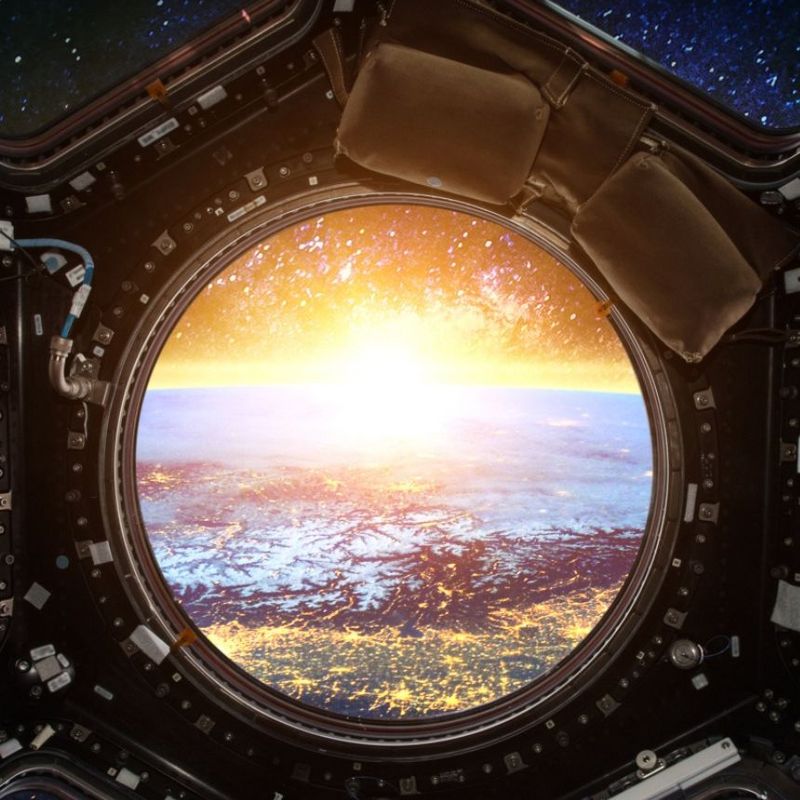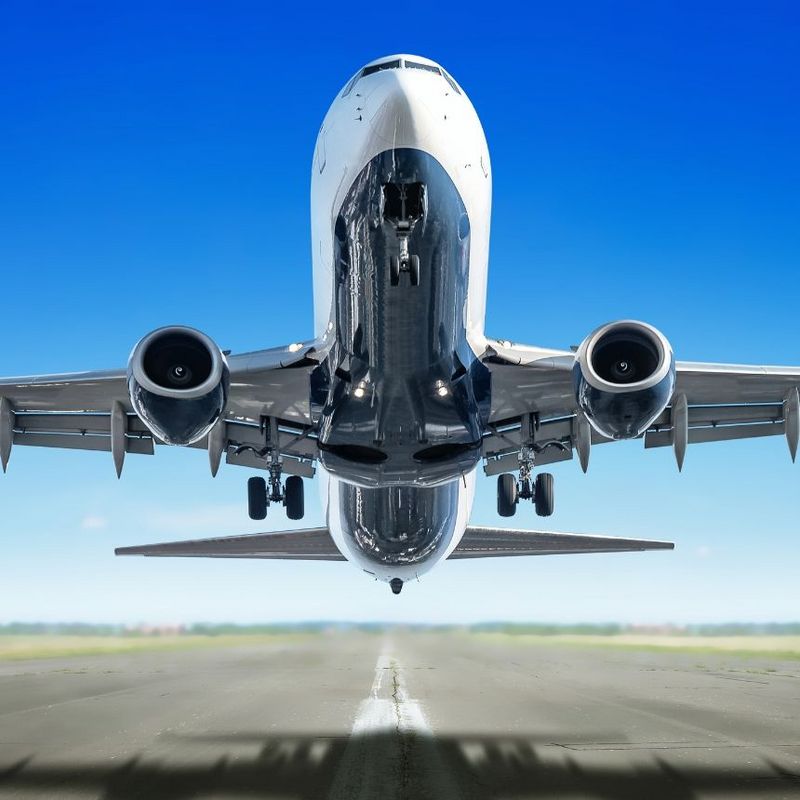03 April 2025
With the prospect of crewed flights to the moon, followed at some point by a journey to Mars, and one day perhaps even the colonisation of other planets, the players in space travel have significantly scaled up their ambitions in recent years. But what forces is the human body exposed to far away from Earth? And would we be able to withstand longer periods in space without harm?
The trip was originally supposed to last only eight days. But due to a technical problem, nine months would elapse before US astronaut Suni Williams and her colleague Barry Wilmore were finally able to splash down safely in a space capsule off the west coast of Florida. The consequences of their extended stay on the International Space Station (ISS) are likely to make themselves felt for some time to come. After all, human bodies are not designed to cope with radiation and weightlessness in space. The latter messes up our sense of balance. In the first few days, the body reacts with nausea and vomiting.
Moon face and baby feet
In space, our bodies, which are acclimatised to gravity, become destabilised in other ways: The water which, as we all know, makes up 60 percent of our bodies gets redistributed, flowing towards to the head. And it shows: Space travellers often develop what NASA has christened “puffy face”. The circumference of the lower extremities, on the other hand, shrinks, turning them into “bird legs” and “baby feet”.
And yet, when they look in the mirror in the morning, they may not even notice the unflattering changes to their appearance. This is because around 70 percent of astronauts develop space-associated neuro ocular syndrome (SANS): Their eyes get deformed, and their vision becomes blurrier. The culprit here again is weightlessness-related water redistribution: As fluid surges to the head, the pressure on the optic nerves and eyes increases. In most cases, these deformations of the eye rectify themselves back on Earth. However, some astronauts have to start wearing glasses after their mission. Or the other way around: While US astronaut Jessica Meir had to rely on glasses before she was launched into space, the flattening of her eyeballs allowed her to enjoy better-than-average eyesight after her return to Earth.
Space Adaptation Back Pain and space anaemia
Another effect of weightlessness due to the lack of gravity is the absence of forces acting on the intervertebral discs. They expand, and the body stretches by about five centimetres. But getting taller in this way isn’t generally enjoyable. Many astronauts complain of low back pain – a phenomenon known as Space Adaptation Back Pain. However, this tends to be mild and usually clears up by itself.
The process takes longer in the case of anaemia, which is often found in space travellers. In microgravity, this space anaemia is not a major problem at first, according to the Canadian researchers who have studied the phenomenon in ISS astronauts. And after returning to Earth, their blood values return to normal after a few months. But if astronauts were to land on Mars or other celestial bodies after a long flight, the anaemia could affect their endurance and strength and jeopardise the mission’s goals. It is therefore important to continue researching the causes of space anaemia in order one day to come up with a targeted treatment for it and, ideally, to prevent it altogether.
Deadlifts to combat bone loss
For the body, floating freely in space is like bobbing around on a waterbed all day. The muscles don’t have to do anything, and the bones don’t have to bear any weight, meaning that they start to waste in double-quick time. To counteract this, the occupants of the ISS therefore have to do two and a half hours of exercise every day.
But even this can only slow down the wastage: Half of the astronauts examined as part of an international study still had reduced bone density one year after their return. Their shin bones had aged as much during the maximum six-month flight as they had in ten years on Earth.
However, what the study also brought to light was that astronauts who intensively practised certain strength exercises in space, such as deadlifts, were able to fully regenerate after returning home. The researchers’ recommendation is therefore for training plans to be adapted and expanded to include new exercises that challenge leg bones in order to better protect astronauts on future missions. Special medications, such as those prescribed for osteoporosis, could also help.
Electrical stimulation for space travellers
For long-term missions, these issues pose another challenge: to develop sports equipment that is as compact as it is efficient. After all, a spacecraft to Mars will have less space for a gym than the ISS does today.
It’s for this reason that experiments are being carried out with EMS suits, for example, which stimulate muscles with weak electrical impulses and could thus make training more effective. This electrical support is also intended to provide more effective training for the small muscles that stabilise the spine in order to bring another well-known affliction of space travellers under control: Their risk of herniated discs increases massively after landing.
Burning rashes and studies with twins in orbit
NASA astronaut Scott Kelly’s return to Earth turned out to be harder than virtually anyone else’s. After his 342 days on the ISS, he felt as though he had the flu, with fever, constant nausea and dizziness. His calves swelled to the size of balloons, and his skin was covered with a rash which hurt with every touch. Months later, he was still struggling with extreme exhaustion.
And a direct comparison with his identical twin showed that Kelly’s long-term stay in space had had an impact on the molecular level. His chromosomes and gut microbiome had changed, his cognitive abilities had slowed down, and some genes had started switching between active and inactive states.
This result was also confirmed by an extensive study of the space tourists of the Inspiration4 mission. The four astronauts were only in space for four days. However, it took six months for the activities of their genes to return to normal. In the case of long-term astronaut Scott Kelly, many of his genes were still working in space mode even after six months had elapsed.
Do women make better astronauts?
Another interesting result of the study was that women seem to be genetically predisposed to cope better with space travel. Their bodies get back to normal faster after their return to Earth than those of their male colleagues. The reason for this is not yet known. The researchers’ assumption is that, since women have to cope with pregnancy, their bodies are better prepared for major physiological changes.
Cosmic rays and compatible colleagues
But what applies to space travellers of all genders is that their significantly higher exposure to radiation in space increases their risk of cancer. Whereas those of us who are Earth-bound are exposed to a dose of two to four millisieverts (mSv) per year, that figure would shoot up to 800 mSv for the return flight to Mars alone. That is twice as much as people who work on X-ray machines in Germany, for example, are allowed to absorb in their entire professional lives. Protecting travellers to Mars from this radiation in the best possible way would be technically very difficult, but it is certainly possible, according to researchers at the Helmholtz-Zentrum Potsdam.
In addition to all these physical hardships, there is also the psychological strain. After all, in cramped spaceships, there is precisely zero privacy. When selecting and training potential travellers to Mars, great care must therefore be taken to ensure that they are emotionally stable, resilient and socially compatible and get on well together so as to ensure that it isn’t just the last survivors who finally reach the Red Planet.



